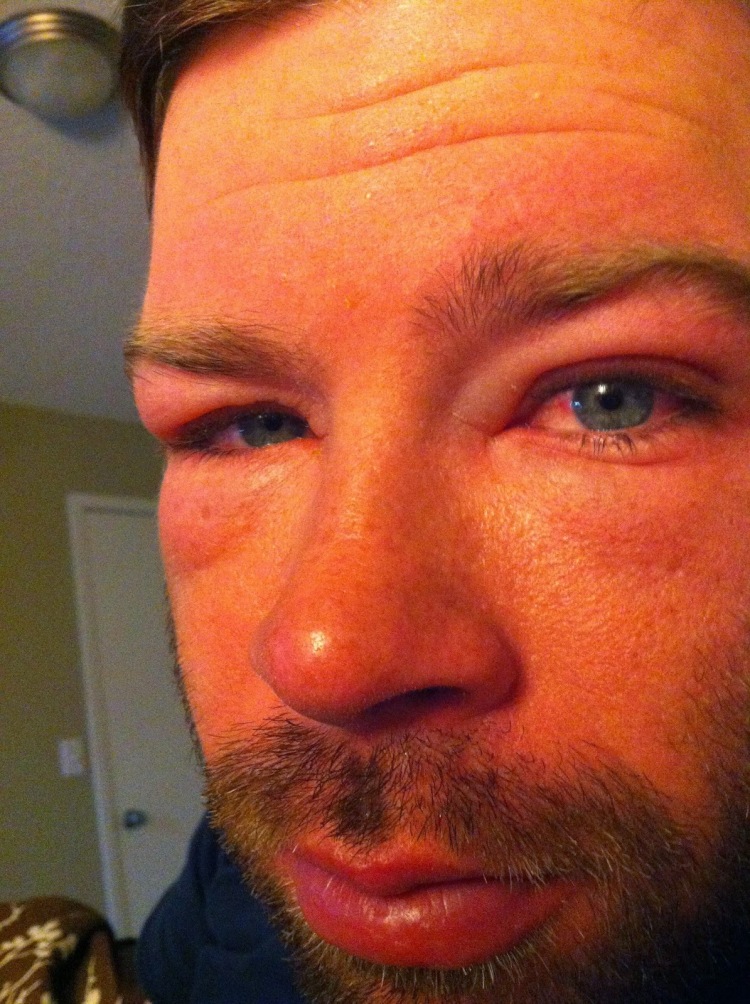Most Coloradans consider “14er season” to be June through September, but such a viewpoint is severely restrictive. The fall, winter and spring months are often the most rewarding times of year in the high country. There’s nothing quite like having a popular summit such as Quandary Peak to yourself, looking out over a sea of white-capped mountains as you sip hot tea that warms your body from the inside out. Like many novice mountaineers, a few short years ago I viewed the gap between summer and winter climbing as insurmountable. I had too many questions, and the answers were too hard to find. The truth is, like many things in life, it really doesn’t have to be that difficult.
1. An introduction to winter layering
This was one of the most confusing aspects to me when I was starting out. Hard shell or soft shell? Down or synthetic? How many layers do I need to carry? This stuff isn’t cheap, and with my limited disposable income, making the right choices was crucial. Everyone has their own system. I’ll offer mine as a guide, along with the reasoning and a more general perspective.
- Polyester/spandex short-sleeve T-shirt: Avoid anything with cotton. I don’t like long sleeves here because it’s uncomfortable when you’re layering other pieces on top, which are almost all long-sleeve as well. If you do opt for long sleeves, find a baselayer with thumb loops to help keep them in place.
- Fleece 1/4-zip pullover: This is my outer layer most of the time in winter. A simple T-shirt and a fleece gets it done when I’m moving, even in frigid temperatures. The other stuff piles on only on the windiest, coldest days, or when there’s precipitation.
- Midweight synthetic pullover: Down would be fine here as well, but I prefer synthetic because it might get a little sweaty if you’re working hard. Synthetic insulation stays warm even when wet. I leave this one behind to save weight when the forecast is warm and dry.
- Soft shell jacket with hood: Hard shells are fine too, but soft shells are generally more breathable. A cheap hard shell is often like wearing a garbage bag, and you want to avoid sweating as much as possible in the winter. Soft shells hold up just fine in Colorado’s dry snow.
- Down over-it-all puffy with hood: Wearing a down jacket over a shell seems kind of weird, right? It’s not. I promise. This is the jacket that will stay at the bottom of your pack 95 percent of the time, but will become your best friend during long rest breaks, on summits or in an emergency situation. Don’t skimp. Again, synthetic works fine, but in general down is warmer, lighter and more compressible.
2. Basic avalanche education is free
Several local organizations, such as Friends of Berthoud Pass, offer free one- or two-hour avalanche awareness seminars. A proper AIARE Avalanche 1 course wouldn’t be a bad idea, but as a hiker the most crucial piece of your avalanche training is learning what terrain to avoid altogether. Don’t go out in the winter without at least attending one of these free classes, and reading one or both of Snow Sense and Staying Alive in Avalanche Terrain. I highly recommend Mountain Rescue Aspen’s Public Avalanche Seminar, which is held every year in January. For just $30 you get a three-hour lecture followed by an on-snow day practicing terrain recognition, beacon searches and more. Can’t beat that.
3. Winter is ridge season, spring is couloir season
People often equate winter with ice axes and crampons. Most of the time, that’s simply not true. You’re far more likely to use snowshoes and trekking poles than technical gear. Ascending wind-swept ridgelines keeps you out of avalanche terrain. Just look out for cornices and make sure there’s terra firma under your feet. Snow-climbing season typically begins in April or May, when it’s finally time to bust out the ice ax and crampons for those tasty couloirs. MICROspikes are likely all the traction you’ll need in winter, and snowshoes with a heel-lift and built-in crampons are the way to go for steep ascents.
4. OpenSnow.com and the CAIC are your friends
Check these two sites daily, even if you’re not planning on heading out. It’s incredibly beneficial to your overall education and awareness. OpenSnow.com meteorologist Joel Gratz provides spot-on weather forecasts, and the Colorado Avalanche Information Center posts updates daily on avalanche conditions.
5. Water freezes
No duh, right? It’s shocking how often someone will be stuck four miles from the trailhead with a solid chunk of ice as their water supply. This is easily avoidable. For starters, leave the hydration bladders at home. Water will almost always freeze in the thin hose and block your access, even if you have an insulator sleeve. I give this advice often, and inevitably someone will respond by championing the incredible lengths they go through to use a bladder and hose year-round. I’m not saying that it won’t work on some days, or even most days. It just won’t work on all days. At some point, it’ll be too cold or too windy or you’ll forget to clear the hose, and you’ll be screwed. All that effort is an incredible pain in the ass, anyway. I prefer to keep a Nalgene, turned upside down, in an insulated koozie clipped to my pack’s hip belt for easy access. My other water bottles are in my pack, wrapped in extra layers and pushed against my back for the additional body heat. A bit of electrolyte powder also protects against freezing.
6. Pluck the low-hanging fruit
Many of the same 14ers that are considered easy in August are still considered easy in January. Mt. Elbert, Mt. Sherman, Quandary Peak and Mt. Bierstadt don’t require much more mileage or elevation gain than they do in the summer, and there are virtually avalanche-safe routes on each. Search the 14ers.com Trip Reports section for your intended mountain, and click only the checkboxes for the winter months. There are dozens of quality write-ups on the easier peaks in December, January, February and March.
7. You don’t need $500 mountaineering boots
Sure, they’re yellow or orange or some other fancy color, and they make you feel like a badass. They’re also overkill for winter hikes and surprisingly not all that warm. Run-of-the-mill winter hiking boots are cheaper, lighter, warmer and more comfortable. As long as they have insulation and come up to your ankle or above, you’re golden. Such boots are even compatible with strap-on crampons. The big caveat is that you’ll want at least a heel welt, and likely both a heel welt and a toe welt, if you plan to try climbing ice. Those are for attaching hybrid or step-in crampons, which are more secure. Expensive mountaineering boots are also more rigid, saving your calf muscles while standing on steep snow or vertical ice.
8. The “Other” Four Essentials
The 10 Essentials list is even more important in winter, when the stakes are higher. I’d like to add four more: a thermos, a multiclava, goggles and mittens. The thermos might be a luxury, but there’s nothing better than hot soup or tea on a cold, windy day. I often joke that a thermos is the best gear purchase I’ve ever made. A multiclava is a close runner-up. These little pieces of fabric have myriad uses, including as a facemask. You need to be able to cover every inch of exposed skin in the winter to prevent frostnip or frostbite. That’s where the goggles come in, too. You need to see even if it’s windy and dumping snow. No need to break the bank here, a simple $20-30 pair will suffice. Finally, buy a good pair of mittens. Even the nicest gloves can’t compare to mittens for warmth. I recommend Black Diamond Mercury Mitts to anyone who will listen.
9. The sun is your enemy
OK, not really. The warmth of the sun feels pretty damn good in the winter. It’s just doubly important to have proper sunglasses and apply SPF30+ sunscreen every two hours. The sun reflecting off the snow is lethal. If you don’t take the steps to protect yourself, you’re in for a world of pain. I’m speaking from experience. Pack sunglasses that cover your full field of vision — glacier glasses are best, and they’re really not that expensive. Keep sunscreen easily accessible, such as in your pants pocket, to limit the excuses against applying it regularly.
10. Carry enough to survive a night out
Like a layering system, this will vary depending on a person’s risk tolerance, attitude and experience. The key is being confident in your ability to live through a night in the open. For some that means a tent and a sleeping bag, for others a bivy sack, and for still others simply extra layers. I fall into the latter category. It would be far from comfortable, but I trust my down puffy and other layers to get me through a winter night. I also carry a tarp to wrap myself in should I need protection from the elements.







excellent article! thanks for sharing 🙂
LikeLike
Eric: Thanks for your comment. Gear preferences are formed based on one's own experiences and needs, and I stand behind this article 100 percent. I hike exclusively in a softshell in winter, including overnights and in bad weather, and I'm still breathing. I've never even been uncomfortable. A well-constructed softshell blocks the wind and sheds snow just fine. The boot advice is widely accepted and was passed down to me from a man who climbed all the 14ers in winter. I also completely disagree with your parting comment about the hood — I'd never, ever (ever) buy a puffy without one. That doesn't mean you're wrong. Like I said initially, gear preferences are personal and there are many arguments where both sides can be correct.
LikeLike
Just a toss out- you can save money buying extra nalgene or thermos etc and keep the camelback bladder. Stuck the hose down your shirt and it won’t freeze. Tried and true!
LikeLike
I see you don’t monetize your page, don’t waste your traffic, you can earn extra cash every month because you’ve
got high quality content. If you want to know how to make extra $$$, search for: Boorfe’s tips best adsense alternative
LikeLike
Thanks for the fine tips. Yes, clothing choices will vary by body style, weight and surface to volume ratio. I like a thin well-washed long sleeve poly base with a silk or rayon short sleeve shirt over, so I can unbutton it, as I’m a big guy who generates steam. Always had trouble keeping hands and feet warm when winter camping, solved it with infrared reflective clothing. ArticShield brand was acquired by Onyx. Search to find IR reflective boot covers and ‘system gloves’, mittens with liner gloves. Put a heat pack in each and they are just like little warming huts for each hand.
LikeLike